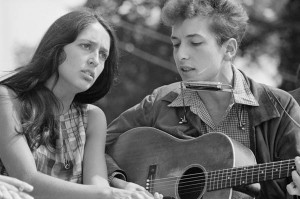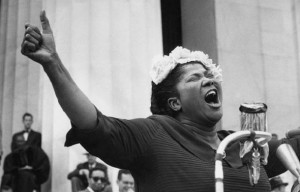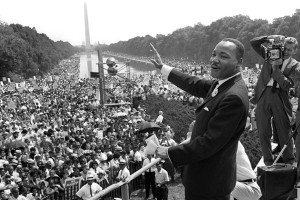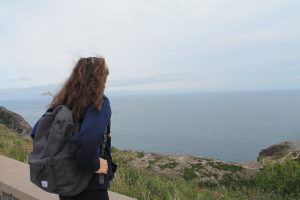We have finally finished English 12, after writing our Provincial exam, and have now flipped onto the History 12 side of our PLP course. History is something that everyone knows and considers when moving forwards in their lives…or is it? There are many aspects of history that we do not consider or think about, let alone the several different ways to take a look at historical events themselves.
To start off our journey into history, we were tasked with creating our own definition of what history really is, in small groups. Here’s what we all came up with:
- History is often the worst parts of the past that we are able to recognize in the present.
- History is a study of the past looked at by a new perspective, often written by the victors
- History is a collection of interpreted, undefined events that gives purpose to our lives and our future.
- The study of history tells a story of past events based on knowledgeable investigation.
- History is the study of the past told through a narration of events. Which, in turn, allows for a dialogue between the past and present, to further establish our knowledge of people and major events.
- History is a biography of humanity and our past chronicles made up of what we remember, not what we thought.
After creating this shell, we then were assigned a historical lens, through which the world analyzes history, and put together a short, informative presentation to the class. We explained the type of analysis and gave examples of how to use it, in order to determine what history truly is. So in this post, I am going to be taking a look at a certain point in history, and examining it using these different lenses.
I’m sure many, if not all, of you have heard of the Civil Rights Movement that spread throughout the United States of America in the 1950’s and beyond. There were many different pieces and events that occurred through the years of fighting and protesting, which was started by thousands of African Americans in the U.S. One that I will be analyzing is a certain protest that had a massive impact on the movement, especially towards the push for the African American right to vote, and drastically affected the lives of thousands of people. This was the first March from Selma to Montgomery, Alabama, known as Bloody Sunday.
Cause and Consequence:
Before Bloody Sunday, the Civil Rights Movement in America had been alive and fighting for years, each event and protest directed at a different cause and hope for social reform. The voting rights of African Americans in the U.S had constantly been a problem, and had become an outlet for discrimination and racism against those who were not considered racially superior. The march known as Bloody Sunday had sprouted from feelings of outrage and oppression due to the lack of rights available to African Americans. It was also sparked by the death of Jimmie Lee Jackson, who was killed by a white officer in a voting rights protest in February of the same year.
Fighting back with this march created considerable consequences on the Civil Rights Movement; on March 15, eight days after watching the violence, President Lyndon B. Johnson presented a bill to Congress that would become the Voting Rights Act* of 1965. But this achievement did not come without extreme hardships and losses.
Historical Significance:
On March 7th, 1965, roughly 600 marchers began a journey from Selma to Montgomery, a march organized to promote black voter registration and to protest the killing of a young African American man, Jimmie Lee Jackson. As they crossed the Edmund Pettus Bridge, the marchers faced a line of state and local police officers who ordered them to halt and turn around. Leader of the marchers, John Lewis refused their “orders”, and Bloody Sunday commenced. The non-violent protestors were beaten with clubs and clouded with tear gas. They were thrown into cars and chased by officers on horseback. The remaining marchers who were well enough to walk, retreated from the bridge and headed back to their beginning point. This attack left over 50 people hospitalized, and the remaining, mentally scarred. This eye-opening event was televised around the world and many people were appalled at what they were witnessing. Martin Luther King called for civil rights activists to come and support the cause by banding together in Selma for a second march, and eventually a third. Bloody Sunday, and the following marches, are well known in the western world and contributed greatly to the Civil Rights cause and its future endeavours. Bloody Sunday became a reminder of America’s flaws and discrimination, and opened a new direction that the nation could take to create an equal life for all.
Change and Continuity:
This march was a horrific turning point in history, where racial segregation and racial injustice were exposed and televised across the world. People were able to grasp what conditions were truly like in America for those who were not racially superior, and experience the hate and oppression African Americans were facing on a daily basis. It changed the way people looked at Americans, and lead to the second March on Selma, where Dr. Martin Luther King Jr. marched along with thousands of others, to the Capitol of Montgomery, Alabama. Although Bloody Sunday was a brutal piece of Civil Rights history, it pushed the movement in a positive direction, and was the spark that contributed to the passage of the Voting Rights Act later in the year.
Evidence and Interpretation:
Firsthand footage was taken on the Edmund Pettus Bridge on March 7th, 1965. Bloody Sunday took place in front of a lens of a camera, which allowed for us to now have access to an extremely valuable primary source, in order to look back on the historical event. There are also survivors of this brutal event, that share their story and recount their role in history that took place on the bridge in Selma. They continue to bring the event to life, in ways that books or pictures may not. Bloody Sunday was televised, but it was also furiously written about in newspapers, magazines, and other writing platforms. In 1965, Life magazine covered the story and released the truth, from the eyes of those who experienced the march.
- Life magazine’s Bloody Sunday spread
This spread offered 7 million readers the opportunity to see what it meant to be black in America in 1965, something that many had not been able to read before. It featured many images of violence, solidarity, prayer and resilience, which ultimately resulted in a movement of social change. Publishing’s such as the one in Life Magazine give us a way to look back on an event with an objective eye and to see the whole story, and the big picture.
Historical Perspective:
Today, the world is constantly changing and developing, due to technology and an acceptance for diversity and differences throughout the world’s population.
When we look back on events like the Civil Rights Movement and specifically, Bloody Sunday, of course we are appalled at the treatment of humankind, regardless of their race or any other diversification that was used to categorize people in the past. We tend to look at history using judgements from the present and how it would seem if it were happening today. Back in 1965, I’m sure many people would have reacted the same way we do today to the events that occurred on the Edmund Pettus Bridge, but there may have been more of a tolerance for that behaviour, as it was not an uncommon occurrence. Looking at Bloody Sunday using historical perspective can give us a better understanding of the time period’s reaction to the event. People were just beginning to figure out how racism was affecting the oppressed in the United States, and many may not have been able to voice their opinions as we are so free to do today. White supremacy still compelled many in the Deep South, and the Civil Rights Movement struggled against most of white America. Bloody Sunday was just one of countless violent events of the time, yet slowly but surely, the terrible losses began resulting in steps forward for the movement.
Ethical Judgements:
After analyzing primary and secondary sources based on the happenings of Bloody Sunday, it is now time to determine my own ethical judgment on the event. It was a terrible, shameful part of the world’s history, but it was simultaneously an event to celebrate the resilience and bravery of those who took part, and ultimately carried on the movement of social awakening and change. It opened the eyes of many across the nation and world, and without it, civil rights may very well not be in the shape and form it is today. It has shown us the worst of humanity, and the strongest who face the terror head-on, for the good of generations to come. So yes, Bloody Sunday helped the the Civil Rights Movement by sparking the passing of the Voting Rights Act of 1965, but it also taught us how courage, non-violence, and unity create a strong society.
- Marchers on the third March from Selma to Montgomery
- Martin Luther King Jr marches
- People make their way from Selma to congregate in the Capitol of Montgomery
By using all six historical lenses and thinking like a historian, I have been able to determine my own outlook on Bloody Sunday, and its affects on our history. These steps are crucial in order to properly analyze historical events, and help us to dive deeper and fully understand the “who, what, where, when, why, and how”. It can be difficult to make sense of history, but after this process, it becomes easier to learn about the world’s past, present, and future.
*The Voting Rights Act: It outlawed discriminatory voting laws that had kept black people off the voting rolls and provided for federal examiners to oversee voter registration in areas where voting rights were endangered.





























